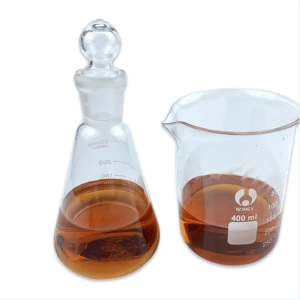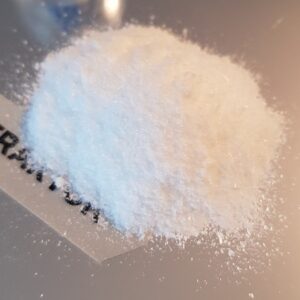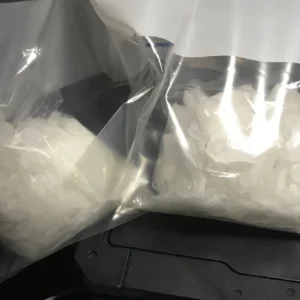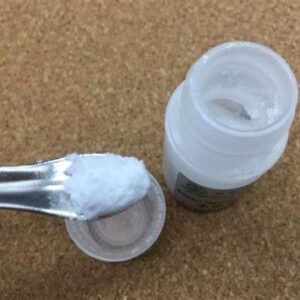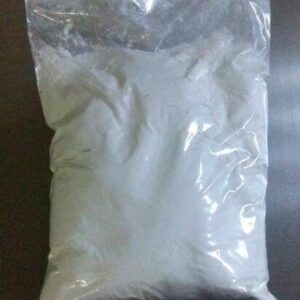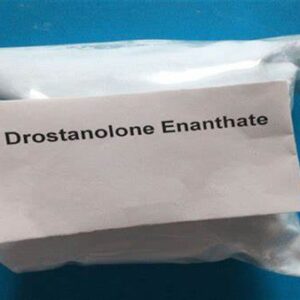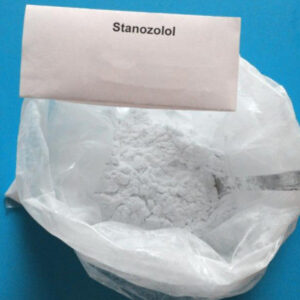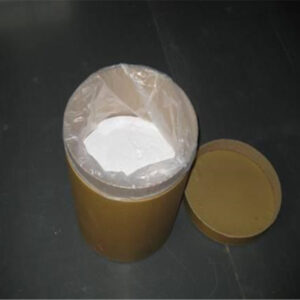Purchase Propanone Piperidinediol Online
Introduction
Propanone piperidinediol (various isomers and related piperidinedione/piperidinediol derivatives exist) is a small organic molecule that appears in chemical literature as an intermediate or analog within piperidine chemistry. Compounds in this family are used in legitimate chemical research and industrial synthesis, but some related piperidone/piperidinediol compounds have also been subject to regulatory control because of their potential misuse as precursors. This guide summarizes the compound class, legitimate uses, safety handling, legal/regulatory context, and best practices for labs. Purchase Propanone Piperidinediol Online
Propanone Piperidinediol — An Educational Guide for Researchers and Labs
What it is (Chemical identity & properties)
“Propanone piperidinediol” is not a single, uniquely standardized name in all sources, but related structures (for example 1-(2-piperidinyl)-2-propanone and various piperidino-propanediols) are cataloged in chemical databases and vendor catalogs. These entries list molecular formulas, CAS numbers, and physical properties used by chemists to identify and work with them in a research setting. For exact identity and purity, you should always refer to the CAS Registry and PubChem/ChemSpider entries for the precise isomer you are studying. (Common Chemistry) Purchase Propanone Piperidinediol Online
Legitimate research and industrial uses
Compounds in the piperidine / piperidone / piperidinediol families are valuable in medicinal chemistry, synthetic methodology development, and as building blocks for more complex molecules in pharmaceuticals and materials research. Typical legitimate uses include:
- Reaction intermediates in medicinal chemistry programs.
- Substrates or reagents in method development and organic synthesis.
- Reference standards for analytical method validation in a licensed laboratory environment.
If your work requires one of these compounds, plan experiments under institutional oversight (IACUC/IRB when applicable) and with approved chemical safety procedures.
Regulatory & legal considerations
Some piperidone and related compounds have been designated as List I precursors or otherwise controlled in certain jurisdictions because they can be diverted into illicit synthesis routes. Regulatory bodies (national and international) monitor precursor chemicals and may prevent or restrict distribution and export. In the U.S., recent rulemaking has targeted masked precursors and specific piperidone derivatives due to concerns about diversion; similar reporting and controls exist internationally through the guidance of the INCB and UNODC. Before acquiring or working with any piperidine/piperidone/piperidinediol compound, confirm its legal status in your jurisdiction and follow institutional procurement channels. (Federal Register)
Safety & hazard profile
Many piperidine-derivatives lack extensive toxicology data, and safety data sheets (SDS) often warn that toxicological properties have not been fully investigated. Standard chemical-safety precautions apply:
- Personal Protective Equipment (PPE): lab coat, chemical-resistant gloves, eye protection, and, where dust or vapour exposure risk exists, appropriate respiratory protection.
- Engineering controls: perform weighing and manipulations in a chemical fume hood; use closed transfers for liquids.
- Spill & emergency: have absorbent materials, eyewash and safety shower available; follow the SDS for first-aid measures and decontamination.
- Toxicology: treat as potentially irritating to skin, eyes, and respiratory tract; avoid ingestion and uncontrolled exposure until authoritative toxicology data are available.
Safe storage & handling
- Labeling: store only in clearly labeled, tightly sealed containers with supplier batch number and COA (Certificate of Analysis) attached.
- Environment: cool, dry, ventilated storage away from incompatible reagents (strong oxidizers, acids as appropriate).
- Segregation: separate from foodstuffs and personal items; maintain locked chemical storage if required by institutional policy.
- Inventory control: log all receipts, uses, and disposals in your laboratory chemical inventory system. This both supports safety and demonstrates compliance if regulators inquire. (MilliporeSigma)
Analytical verification & quality control
Only use material that has been verified by an accredited vendor or your internal QC lab. Request and retain the Certificate of Analysis (COA) and chain-of-custody documents. Analytical checks commonly used include NMR, GC/MS or LC/MS, and HPLC to confirm identity and purity before using a compound in experiments. If vendor documentation is absent or ambiguous, do not use the material for critical experiments.
Ethical procurement & institutional best practices
Because related compounds can be diverted, procurement must be done through institutional buying channels (procurement office, authorized PI accounts, or central stores). Best practices include:
- Purchase only from reputable, accredited chemical suppliers.
- Use formal purchase orders with clear research-use declarations where required.
- Retain SDS, COA, invoices, and shipping documents.
- Notify your institution’s compliance or EHS office prior to ordering if there is any regulatory uncertainty.
- If a chemical appears to be a controlled precursor, consult legal/compliance teams and secure any required licenses or permits.
Waste disposal & decontamination
Dispose of unused material and contaminated waste per local hazardous waste regulations. Many piperidine derivatives are organic hazardous waste and must be collected in labeled waste containers for incineration or other approved destruction. Do not pour down drains or dispose of in general trash. Coordinate disposal with your institutional EHS or hazardous waste contractor.
Emergency procedures
- Exposure: for skin or eye contact, immediately flush with copious water for at least 15 minutes and seek medical attention with the SDS available.
- Inhalation: move exposed person to fresh air; if breathing is difficult, provide oxygen and seek emergency care.
- Spills: evacuate area as necessary, use appropriate PPE, contain and collect with inert absorbent, and notify EHS. Follow SDS guidance for firefighting and incompatible materials. (Fisher Scientific)
Alternatives & research approaches
If regulatory or procurement barriers exist, consider:
- Structural analogs that are clearly permitted and serve the same research purpose (verify legality).
- Developing in-silico or computational models to reduce reliance on novel precursors.
- Collaborating with institutions that already hold appropriate licenses and oversight.
Summary & next steps for researchers
Propanone piperidinediol and related piperidine chemistry can be scientifically valuable but must be handled with heightened due diligence because of regulatory and safety concerns. Always:
- Confirm exact chemical identity (CAS) and obtain COA.
- Consult institutional EHS and legal/compliance before procurement.
- Use standard lab safety controls and documented inventory procedures.
Keywords / SEO tags
Propanone Piperidinediol, piperidine derivatives, piperidone, chemical safety, precursor regulation, laboratory procurement, SDS, COA, hazardous chemical handling, research compliance
Sources & further reading
- PubChem / ChemSpider chemical records for piperidine derivatives.
- Sigma-Aldrich / MilliporeSigma SDS and supplier safety documents.
- Fisher Scientific safety data references for related diols and propanediols.
- DEA & Federal Register rulemaking and precursor control notices (recent U.S. actions on masked precursors and piperidone derivatives).
- INCB/UNODC lists and technical reports on precursor chemicals. (United Nations : Synthetic Drugs)
Purchase Propanone Piperidinediol Online
Purchase Propanone Piperidinediol Online: Buy Propanone Piperidinediol Factory Price Piperidinediol Hcl, 2-Chloro-1-(4-Methylphenyl)-1-Propanone CAS 69673-92-3conveniently online. Known chemically as acetone, propanone, or dimethyl ketone, it is an organic compound with the formula (CH3)2CO. This is the most basic and smallest form of ketone, appearing as a clear, highly volatile, and flammable liquid with a sharp, distinct odor. Secure your supply of Propanone Piperidinediol online today.
Wholesale Propanone Available Online
Buy bulk quantities of Piperidinediol Hydrochloride, including 2-Chloro-1-(4-Methylphenyl)-1-Propanone (CAS 69673-92-3), directly from Chinese manufacturers at competitive factory prices.
Factory Price Piperidinediol Available for Purchase
CAS Number: 69673-92-3
Product Name: 2-Chloro-1-(4-methyl phenyl)-1-Propanone
Molecular Formula: C10H11ClO
Molecular Weight: 182.647
Alternative names for acetone include:
- 2-Chloro-1-(4-methyl phenyl)-1-propanone
- 1-Propanone, 2-chloro-1-(4-methyl phenyl)-
- 2-Chloro-1-p-tolyl-propan-1-one
- β-Chloro-4-methylpropiophenone
- 2-chloro-1-(4-methyl phenyl)propane-1-one
Product Code: 69673-92-3
HS Code: 2901100000
Annual Production Capacity: 50 metric tons
Order Propanone Piperidinediol in bulk quantities today.
Factory-Direct Dimethyl Ketone
Product Name: 2-Chloro-1-(4-methyl phenyl)-1-Propanone
Appearance: Oily liquid
Grade: Industrial Grade
Molecular Formula: C10H11ClO
CAS Number: 69673-92-3
Applications: A vital raw material in industrial processes and organic synthesis.
Delivery: Fast and timely delivery.
Packaging: Customized according to client specifications.
Transportation: Via sea or air freight.
Storage: Keep in dry, dark, and well-ventilated areas.
Available Ports: Tianjin, Shanghai.
Acetone: Global Production and Uses
Acetone, or propanone, is a versatile organic solvent used in numerous industrial and domestic applications. In 2010 alone, global production reached 6.7 million metric tons, predominantly employed as a solvent and for the manufacture of methyl methacrylate, bisphenol A, and PMMA (polymethyl methacrylate). Acetone is also a key building block in organic chemistry and serves common household purposes, such as in nail polish remover and paint thinners. In the United States, acetone enjoys exempt status as a volatile organic compound (VOC), underscoring its broad utility across multiple sectors.
Biological Role and Metabolism of Acetone
Acetone naturally forms in the human body as a byproduct of normal metabolic activities. It can be found in small quantities in blood and urine, with higher levels present in individuals experiencing diabetic ketoacidosis. Studies suggest acetone has minimal reproductive toxicity, with ketogenic diets—marked by elevated levels of ketones like acetone—showing potential therapeutic benefits for infants and children suffering from refractory epilepsy.
Acetone: Safety Considerations
Acetone, as a colorless and highly flammable solvent, is widely encountered in households and industries alike. It is integral to products such as nail polish removers, paint thinners, and varnish removers. Despite its versatility, acetone can irritate when exposed to the eyes, nose, skin, or throat, and ingestion can lead to acetone poisoning. This risk highlights the importance of safe handling and responsible use, especially in environments where it may be inhaled or accidentally ingested.
Potential Health Risks of Acetone Exposure
Acetone exposure, even in small amounts, can lead to adverse effects, including eye irritation, respiratory discomfort, and dizziness. Prolonged or severe exposure can result in more severe consequences, such as damage to the nervous system. In rare cases, acetone poisoning can occur, manifesting as symptoms like fruity-smelling breath, low blood pressure, lethargy, slurred speech, and impaired motor coordination.
Preventative Measures for Acetone Exposure
To mitigate the risks associated with acetone use, it is advisable to handle acetone-containing products in well-ventilated areas, away from open flames or cigarettes. Protective equipment, such as gloves and goggles, should be worn when working with acetone. Proper storage, disposal, and cleanup procedures can also help prevent exposure, especially in households with children.
Acetone in Organic Chemistry and Industrial Applications
Acetone plays a significant role in industrial and laboratory settings, functioning as an organic solvent, degreaser, and key intermediate in chemical synthesis. Its unique chemical properties make it indispensable in the production of plastics, lacquers, and textiles, among many other materials. For organic chemists, acetone is a crucial reagent and solvent in numerous reactions.
Order Acetone Products at the Best Prices
Secure your acetone, propanone, or Piperidinediol supplies online at the best market rates. Whether you are purchasing for industrial use, laboratory applications, or wholesale distribution, quality and timely delivery are assured.
Frequently Asked Questions
- Is propanone toxic to humans?
- Can acetone substitutes be used for nail polish removal?
- What are the primary sources of acetone in the environment?
- Is acetone harmful to the skin upon direct contact?
For further information, explore detailed chemical safety facts on acetone and related compounds. Place your order for acetone and propanone online today!

